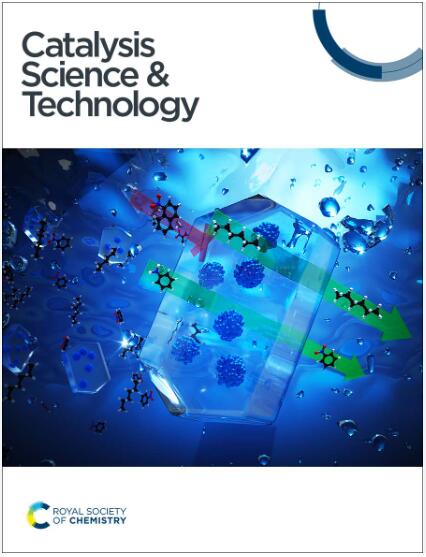Zr-doped heterostructure interface to tune the electronic structure of bi-functional electrocatalysts for water splitting†
IF 4.4
3区 化学
Q2 CHEMISTRY, PHYSICAL
引用次数: 0
Abstract
Electrocatalysts with earth-abundant materials for water splitting are proposed to obtain high activity and durability simultaneously by Zr-doping interface based on physical chemistry and material science for engineering applications. Here, we report a high-valence Zr metal doping-based technique to design Zr-NiFeLDH@NiCoP/NF 3D heterostructure bi-functional electrocatalysts. This approach effectively regulates the electronic structure and surface catalytic morphology; thus the incorporation of high-valence Zr significantly enhances reaction kinetics, as evidenced by the Tafel plot and electrochemical impedance spectroscopy. The electrocatalysts enriched the active sites and achieved low overpotentials, as a result of comparable performance and impressive long-term stability exceeding 100 h at a high current density of 500 mA m−2 for both HER and OER. Furthermore, Zr-NiFeLDH@NiCoP/NF exhibits exceptional overall water splitting performance, requiring only 1.53 V to reach 10 mA cm−2 and showcasing remarkable durability for 865 h as an anode and cathode. Therefore, this work demonstrates the promising potential of integrating nonprecious high-valence Zr metal into Zr-NiFeLDH@NiCoP/NF heterostructure bi-functional electrocatalysts to significantly enhance overall water splitting performance.

掺杂 Zr 的异质结构界面可调整用于水分离的双功能电催化剂的电子结构†。
基于物理化学和材料科学的工程应用,提出了通过掺杂 Zr 界面同时获得高活性和耐久性的富土材料水分离电催化剂。在此,我们报告了一种基于高价Zr金属掺杂技术设计Zr-NiFeLDH@NiCoP/NF三维异质结构双功能电催化剂的方法。这种方法有效地调节了电子结构和表面催化形态;因此,高价位 Zr 的掺入大大提高了反应动力学,塔菲尔图和电化学阻抗谱都证明了这一点。这些电催化剂富集了活性位点,过电位较低,因此在 500 mA m-2 的高电流密度下,HER 和 OER 的性能相当,长期稳定性超过 100 小时,令人印象深刻。此外,Zr-NiFeLDH@NiCoP/NF 还表现出卓越的整体水分离性能,仅需 1.53 V 即可达到 10 mA cm-2,并且作为阳极和阴极可持续 865 h。因此,这项工作证明了在 Zr-NiFeLDH@NiCoP/NF 异质结构双功能电催化剂中集成非贵金属高价位 Zr 的巨大潜力,可显著提高整体水分离性能。
本文章由计算机程序翻译,如有差异,请以英文原文为准。
求助全文
约1分钟内获得全文
求助全文
来源期刊

Catalysis Science & Technology
CHEMISTRY, PHYSICAL-
CiteScore
8.70
自引率
6.00%
发文量
587
审稿时长
1.5 months
期刊介绍:
A multidisciplinary journal focusing on cutting edge research across all fundamental science and technological aspects of catalysis.
Editor-in-chief: Bert Weckhuysen
Impact factor: 5.0
Time to first decision (peer reviewed only): 31 days
 求助内容:
求助内容: 应助结果提醒方式:
应助结果提醒方式:


